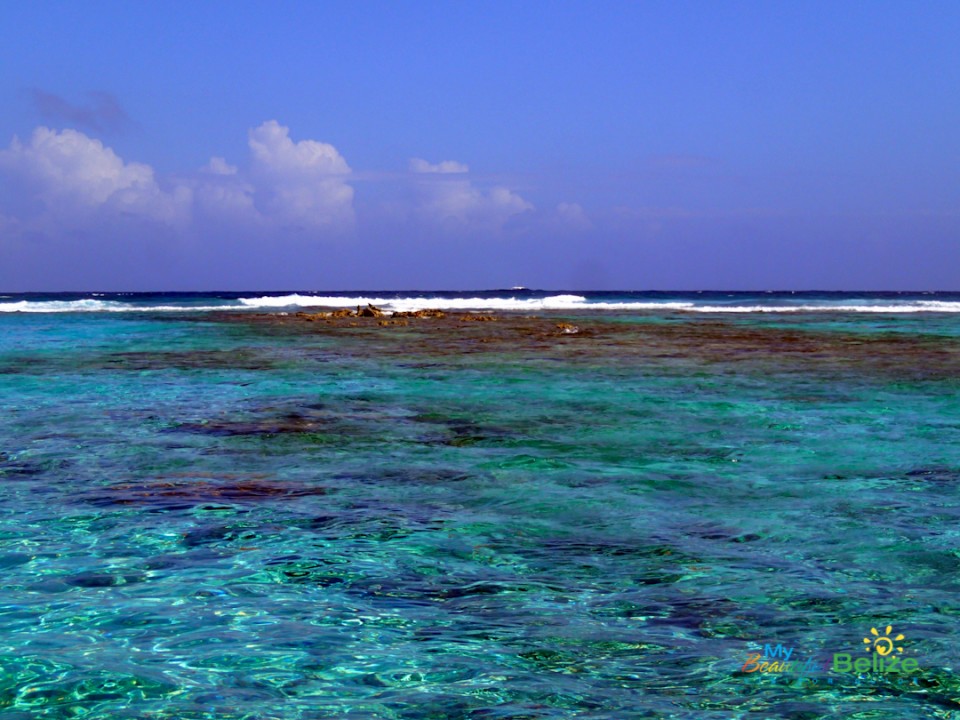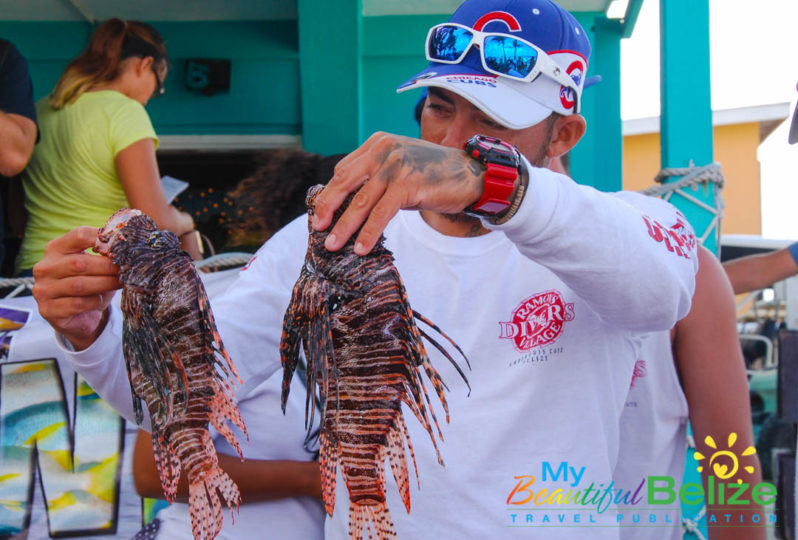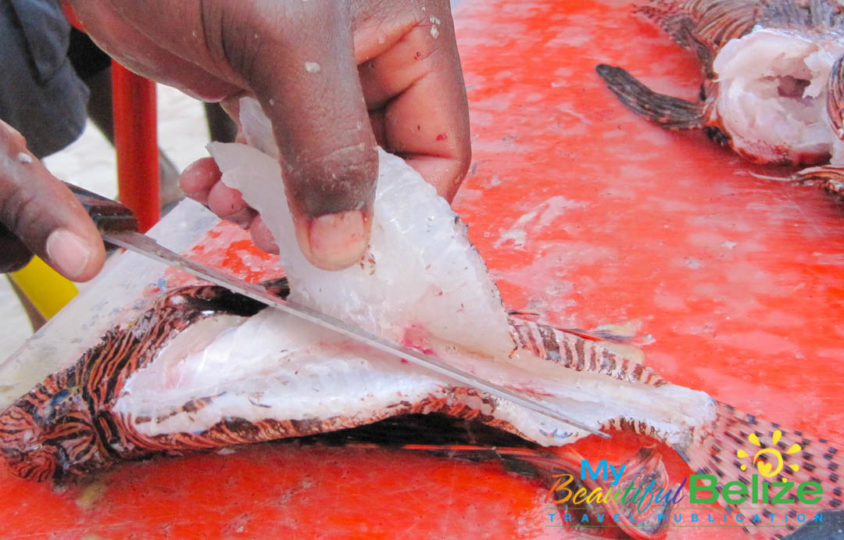It seems like every day we hear about a global landmark in peril. From deforestation, to global warming, species loss and overpopulation, the list goes on and on. In Belize, we face our own challenges, with the greatest one being the preservation of the Mesoamerican Barrier Reef system. This crown jewel is the second largest in the world, and the largest in the western hemisphere. Belize has the distinct honor of being home to 80% of this system, which runs parallel to our coast for about 185 miles. Here, it is known as Belize Barrier Reef Reserve System, which provides around 15% of the country’s Gross Domestic Product. Many coastal communities depend heavily on the reef for their daily survival, with tourism being one of the main activities. In 1996 the Belize Barrier System was designated a United Nations Educational, Scientific, and Cultural Committee (UNESCO) World Heritage Site. Sadly, in 2009, UNESCO placed Belize’s reef system on the List of World Heritage Sites in Danger, where it has remained ever since. Suffering from the effects of coastal construction and water pollution, these harmful industrial activities impact Belize’s economy, natural resources, and the 1,400 species that live in the reef system. Ironically, it is one of those species that is playing the villain as well. The beautiful, yet uninvited Lionfish is doing his part to gobble up every little fish and young crustacean he can get ahold of, threatening the delicate balance of the reef ecosystem.
In 1996 the Belize Barrier System was designated a United Nations Educational, Scientific, and Cultural Committee (UNESCO) World Heritage Site. Sadly, in 2009, UNESCO placed Belize’s reef system on the List of World Heritage Sites in Danger, where it has remained ever since. Suffering from the effects of coastal construction and water pollution, these harmful industrial activities impact Belize’s economy, natural resources, and the 1,400 species that live in the reef system. Ironically, it is one of those species that is playing the villain as well. The beautiful, yet uninvited Lionfish is doing his part to gobble up every little fish and young crustacean he can get ahold of, threatening the delicate balance of the reef ecosystem. Lionfish are native to coral reefs in the warm, tropical waters of the South Pacific and Indian Oceans. They prey on a wide variety of smaller fishes, shrimps and crabs, and have few predators in their native range, where they top the upper levels of the food chain. So how is it that these voracious eating machines ended up in the Atlantic Ocean? Lionfish were first spotted in Florida USA in 1985. Although it remains a mystery, many speculate that the aquarium trade in the USA is to blame, where the fish is popular with saltwater aquarium enthusiasts. Others suggest that Lionfish entered Atlantic waters when larvae or juvenile fish were trapped in ships moving from the Pacific to the Atlantic and were released when the ballast water was pumped out. Lionfish are now found in the Western Atlantic, Caribbean, and Gulf of Mexico, wreaking ecological havoc across Caribbean reefs from Panama to Puerto Rico.
Lionfish are native to coral reefs in the warm, tropical waters of the South Pacific and Indian Oceans. They prey on a wide variety of smaller fishes, shrimps and crabs, and have few predators in their native range, where they top the upper levels of the food chain. So how is it that these voracious eating machines ended up in the Atlantic Ocean? Lionfish were first spotted in Florida USA in 1985. Although it remains a mystery, many speculate that the aquarium trade in the USA is to blame, where the fish is popular with saltwater aquarium enthusiasts. Others suggest that Lionfish entered Atlantic waters when larvae or juvenile fish were trapped in ships moving from the Pacific to the Atlantic and were released when the ballast water was pumped out. Lionfish are now found in the Western Atlantic, Caribbean, and Gulf of Mexico, wreaking ecological havoc across Caribbean reefs from Panama to Puerto Rico. The Lionfish have distinctive maroon (or brown) and white stripes, fleshy tentacles above the eyes and below the mouth, and an imposing fan of prickly venomous spines. With a lifespan of over 15 years and growing up to 20 inches, the Lionfish is a voracious carnivore that consumes over 56 species of fish and many invertebrate species up to half its body size. A single female lionfish can spawn over 2 million eggs a year.
The Lionfish have distinctive maroon (or brown) and white stripes, fleshy tentacles above the eyes and below the mouth, and an imposing fan of prickly venomous spines. With a lifespan of over 15 years and growing up to 20 inches, the Lionfish is a voracious carnivore that consumes over 56 species of fish and many invertebrate species up to half its body size. A single female lionfish can spawn over 2 million eggs a year.  Lionfish are venomous – not poisonous; there is a difference. Although both venomous and poisonous animals produce a toxin that can be harmful to other organisms, the method of delivery is different. Venomous organisms use a specific apparatus like spines or teeth to inject their toxin. Poisonous organisms, on the other hand, require their victim to ingest or absorb the toxin. Lionfish possess venomous dorsal, pelvic, and anal spines that deliver toxin through an unpleasant puncture wound.
Lionfish are venomous – not poisonous; there is a difference. Although both venomous and poisonous animals produce a toxin that can be harmful to other organisms, the method of delivery is different. Venomous organisms use a specific apparatus like spines or teeth to inject their toxin. Poisonous organisms, on the other hand, require their victim to ingest or absorb the toxin. Lionfish possess venomous dorsal, pelvic, and anal spines that deliver toxin through an unpleasant puncture wound.  The sting causes intense pain, redness and swelling around the wound site. Although the worst of the pain is over after an hour or two, some people report pain and tingling sensations around the wound for several days or weeks. So, if you stay away from the spines, you’re good to go, which explains why it’s perfectly safe to eat Lionfish!
The sting causes intense pain, redness and swelling around the wound site. Although the worst of the pain is over after an hour or two, some people report pain and tingling sensations around the wound for several days or weeks. So, if you stay away from the spines, you’re good to go, which explains why it’s perfectly safe to eat Lionfish! Eat Lionfish you might ask?! Yes, and they are delicious! Once you dispose of the spines, there is no risk of envenomation, and you’re free to prepare your lionfish as you choose. Lionfish have moist, buttery meat that is often compared to hogfish and grouper. The mild taste and flakey texture allow the fish to be prepared in a wide variety of different ways. From raw to deep fried, grilled to blackened, Lionfish dishes are bound to fit anyone’s taste. By eating Lionfish, you’re not only treating yourself to a new, tasty dish, but also doing your part to help save native reef fish from this voracious predator. Not to mention it’s good for you! Did you know Lionfish have proven to be high in Omega 3 fats, which play a crucial role in brain function and may reduce the risk of heart disease.
Eat Lionfish you might ask?! Yes, and they are delicious! Once you dispose of the spines, there is no risk of envenomation, and you’re free to prepare your lionfish as you choose. Lionfish have moist, buttery meat that is often compared to hogfish and grouper. The mild taste and flakey texture allow the fish to be prepared in a wide variety of different ways. From raw to deep fried, grilled to blackened, Lionfish dishes are bound to fit anyone’s taste. By eating Lionfish, you’re not only treating yourself to a new, tasty dish, but also doing your part to help save native reef fish from this voracious predator. Not to mention it’s good for you! Did you know Lionfish have proven to be high in Omega 3 fats, which play a crucial role in brain function and may reduce the risk of heart disease.

Lionfish ceviche anyone?
Across Belize, conservation groups like ECOMAR, Blue Ventures and the Belize Fisheries Department are now working with communities to teach fishermen Lionfish handling and processing techniques. By establishing a market for the tasty invader, this solution creates economic incentives for the regular removal of Lionfish from Belize’s reefs. It also offers an alternative target species for the Belizean fishing industry, which is dominated by conch and lobster; both of which are showing signs of decline.

Yummy grilled Lionfish
Throughout the coastal communities, Lionfish Tournaments are also hosted, offering grand prizes for the most fish caught, and often the event includes an opportunity to taste the catch in a variety of ways. Sometimes they even host cook-offs, where chefs compete for the best Lionfish dish! Ambergris Caye is the home to one such winner, Maresha Reid, who serves the fish at her popular restaurant, Pirates Treasures Restaurant. Other Belizeans have found a creative solution by crafting jewelry out of Lionfish spines that are discarded by fishermen, and transform them into unique handmade jewelry, such as earrings, bracelets, and necklaces.
Although it seems the Lionfish is here to stay, these efforts, and a growing demand for this tasty fillet, can help keep them in check. If you see it on the menu, it’s a delicacy you must sample. What a delicious way to eradicate an invasive species!


